What Are Your Nails Saying About Your Health?
Ripples, bumps or splits may be a sign of illness
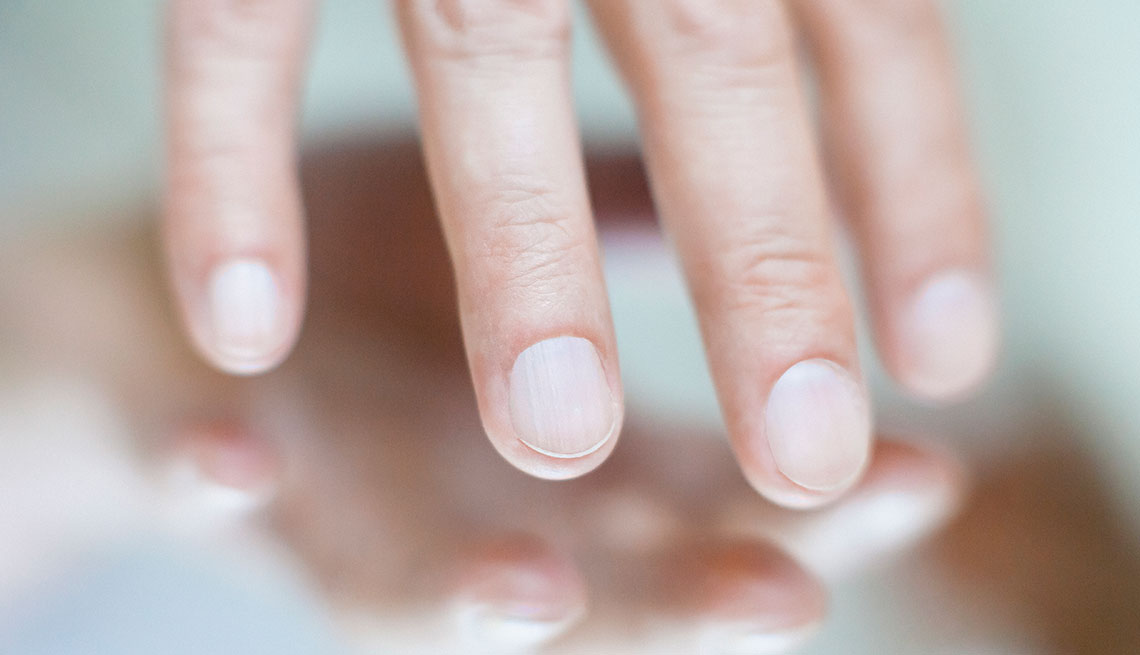
GETTY IMAGES
Fingernail changes can be warning signs in regard to your health and should be checked out rather than ignored.
Most of us don’t pay much attention to our fingernails. Even if you polish, primp or manicure your nails, you may not notice a rosy, yellow or pale color, or if there are ripples or ridges developing. But all of these may be warning signs that something is wrong with your overall health.
AARP Membership: Join or Renew for Just $16 a Year
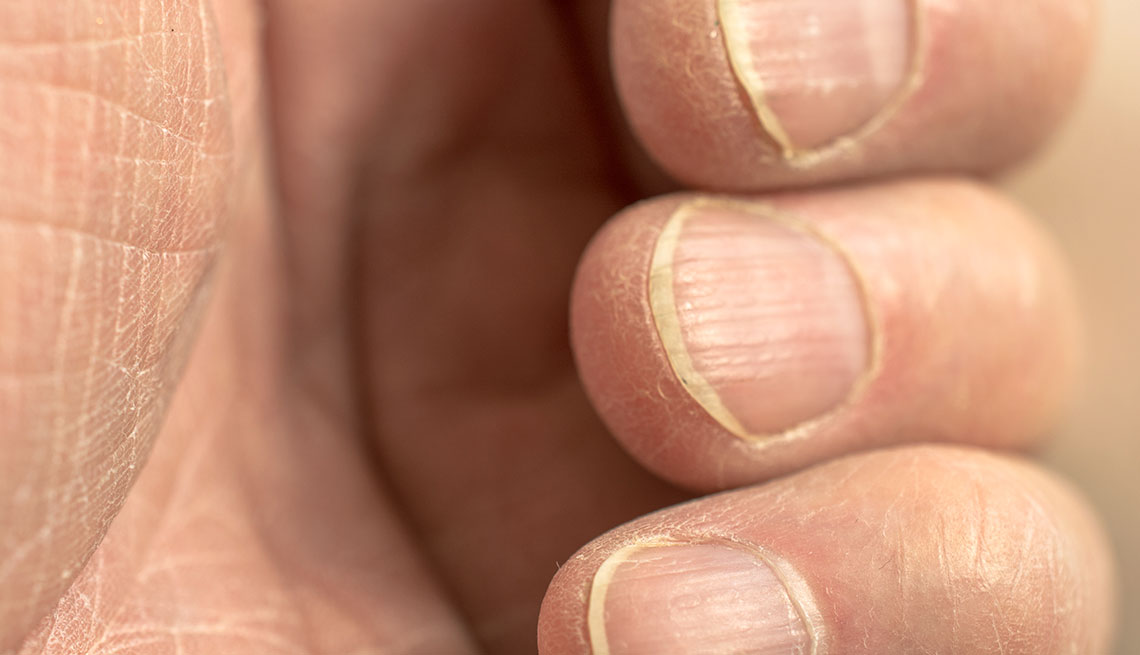
GETTY IMAGES
Rippled nails
The surface of your fingernail should be smooth. If you detect ripples or pitting developing, this may be an early warning of psoriasis, eczema or inflammatory arthritis. According to the Healthline.com website, “Iron deficiency anemia can also trigger vertical ridges and changes to your nails that make them concave, or spoon-shaped.” Deficiencies in calcium, zinc or vitamin A can also be the culprit of ridges in fingernails.
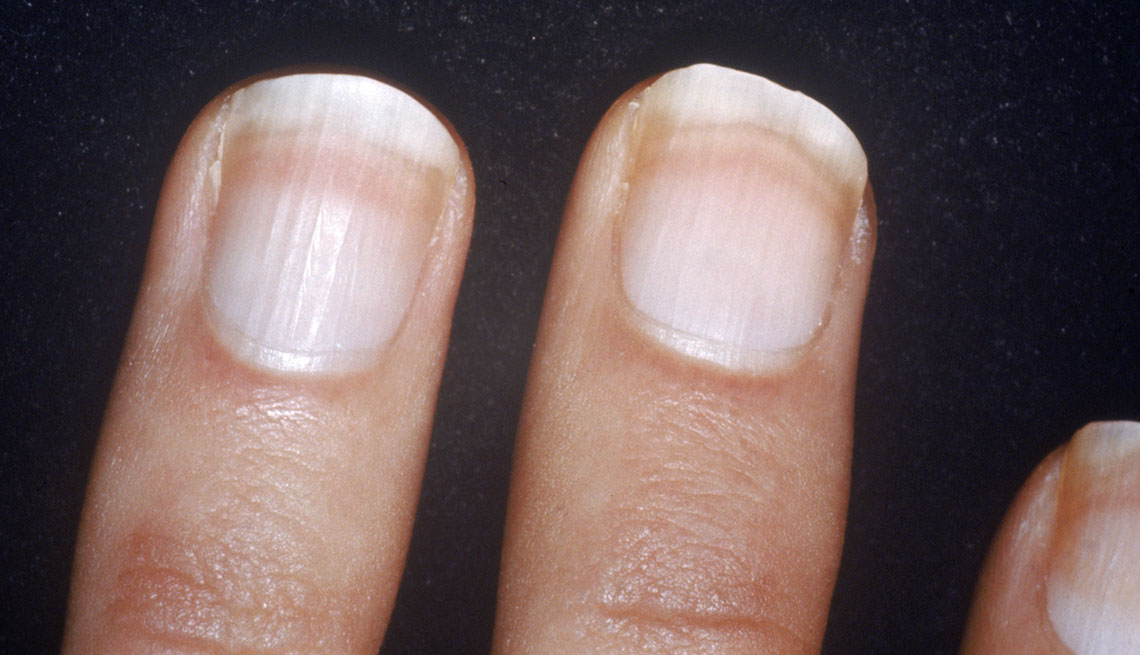
GETTY IMAGES
White nails
If the nail bed is predominantly white with darker rims near the top, this can indicate liver problems such as hepatitis. According to WebMD, pale fingernails can also indicate problems with anemia, liver disease or even heart disease.
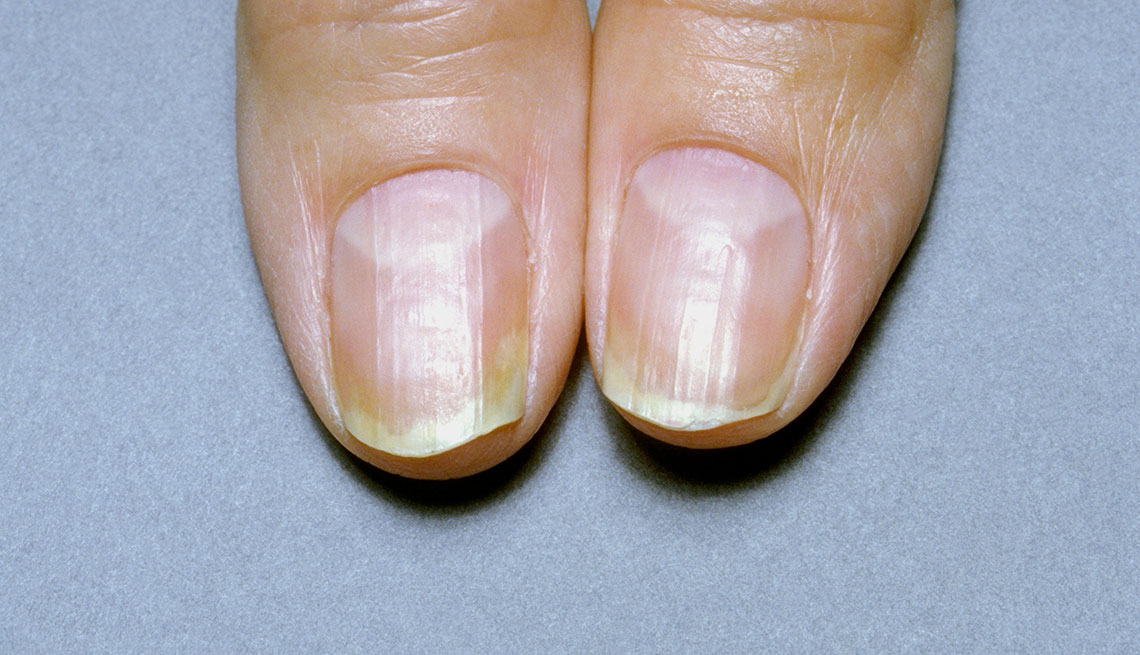
ALAMY
Yellow nails
A fungal infection is the most common cause of yellow nails. If the condition persists, the nails may continue to deteriorate and become thick and crumble. Healthline.com states: “In some cases, nails that remain yellow despite repeated treatment can be a symptom of thyroid conditions, psoriasis, or diabetes. In rare situations, yellow nails can indicate the presence of skin cancer. A condition called yellow nail syndrome (YNS) is indicated by continually yellow nails and respiratory or lymphatic problems.”
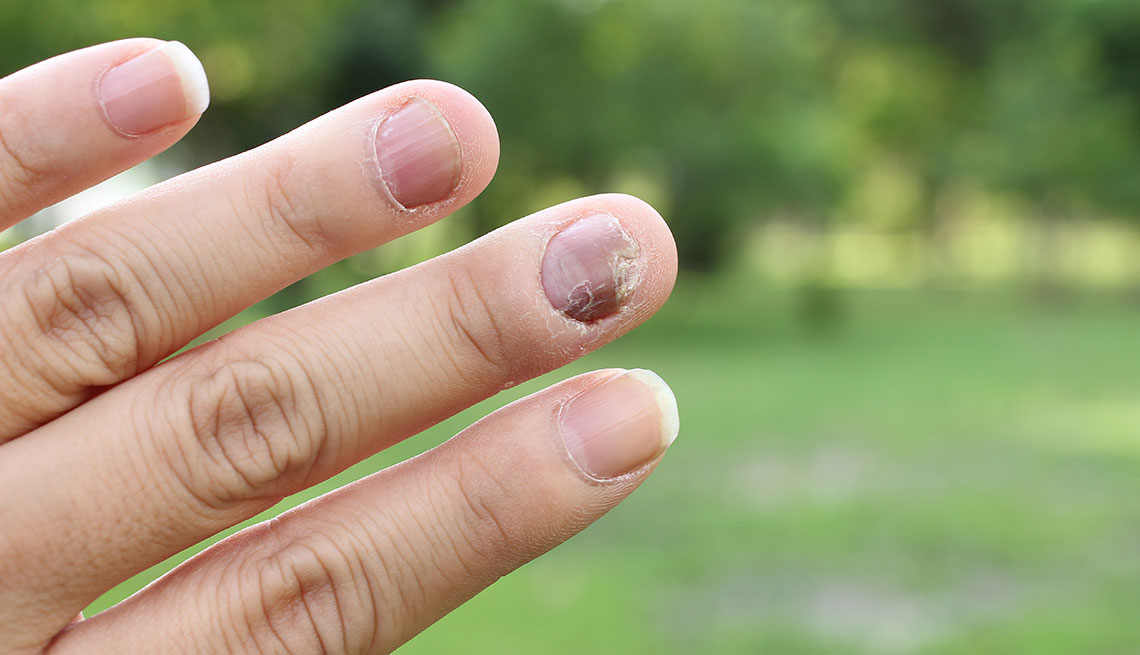
GETTY IMAGES
Split or cracked nails
A combination of splitting and cracking nails can be due to a fungal infection. And if the splitting is not related to damage from chemicals like such as household cleansers, it could be a sign of thyroid disease. According to the Livestrong website, “Splitting nails may be caused by hypothyroidism, a condition in which the thyroid gland is underactive and doesn’t produce enough hormones. Other symptoms of hypothyroidism include weakness, fatigue, unintentional weight gain, joint pain and heavy menstrual periods.”
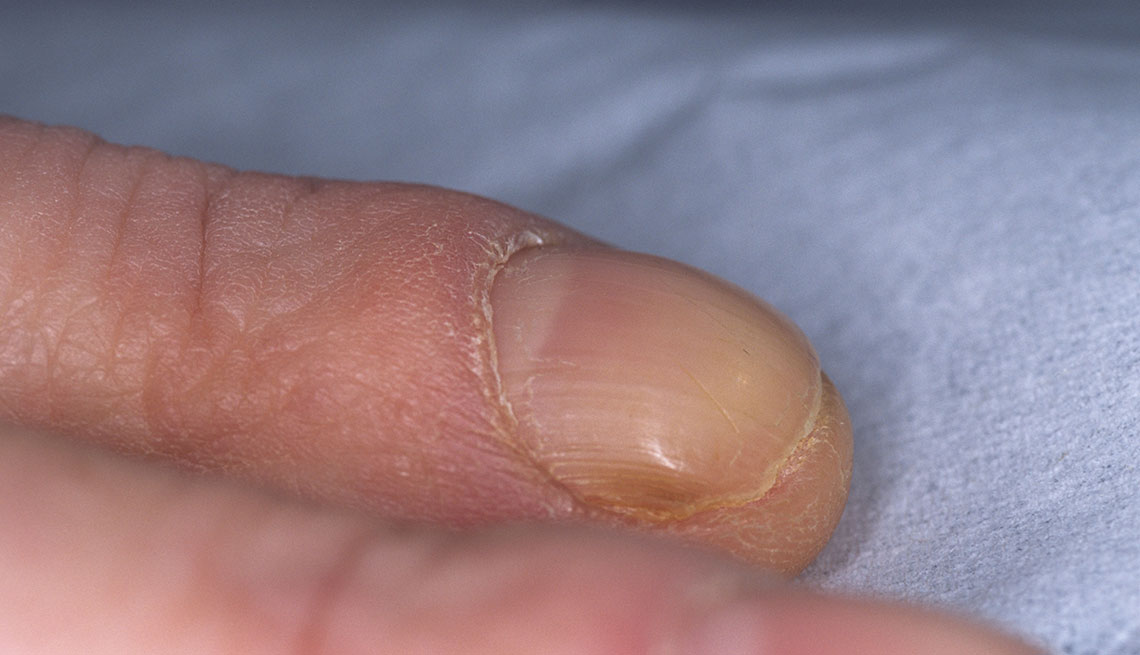
GETTY IMAGES
Clubbing nails
Clubbing happens when the nails become rounded and the tips of the fingers swell in size. It is a slow process and can take years before it becomes evident. According to the Mayo Clinic, “Nail clubbing is sometimes the result of low oxygen in the blood and could be a sign of various types of lung disease. Nail clubbing is also associated with inflammatory bowel disease, cardiovascular disease, liver disease and AIDS.”
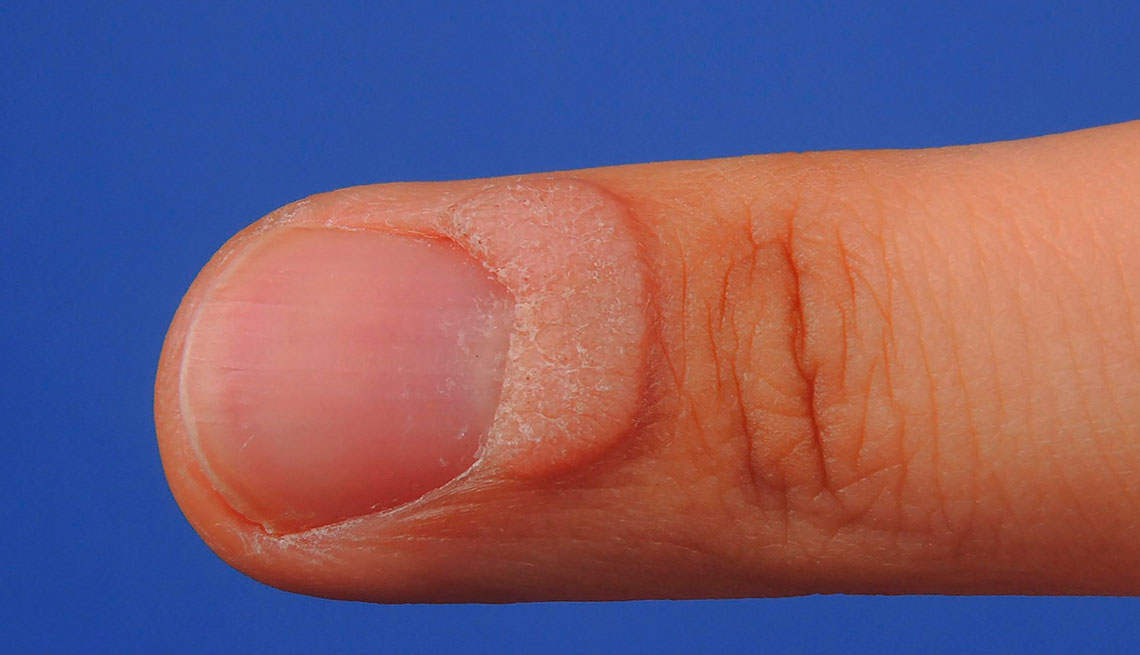
GETTY IMAGES
Puffy nail fold
If puffy skin develops around the nail bed, accompanied with redness and swelling, this could be due to an infection called paronychia. It’s a common infection that can usually be treated with antibiotics. Puffy nail beds can also be a sign of a disorder. According to WebMD, “It may be the result of lupus or another connective tissue disorder.”
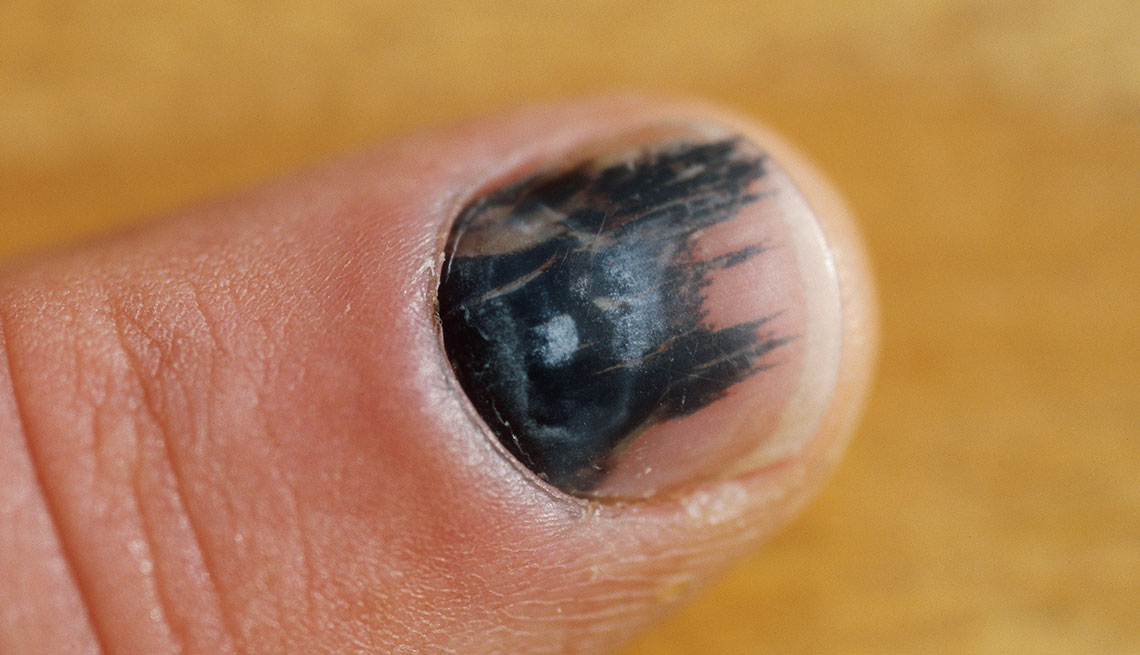
GETTY IMAGES
Dark lines beneath the nail
This type of change to your nails can be cause for concern. Dark lines beneath the nail can be due to an injury in which blood can clot underneath the nail and cause dark lines to form. If it is not due to an injury, it should be looked into as soon as possible. WebMD says it can be a sign of cancer: “Dark lines beneath the nail should be investigated as soon as possible. They are sometimes caused by melanoma, the most dangerous type of skin cancer.”
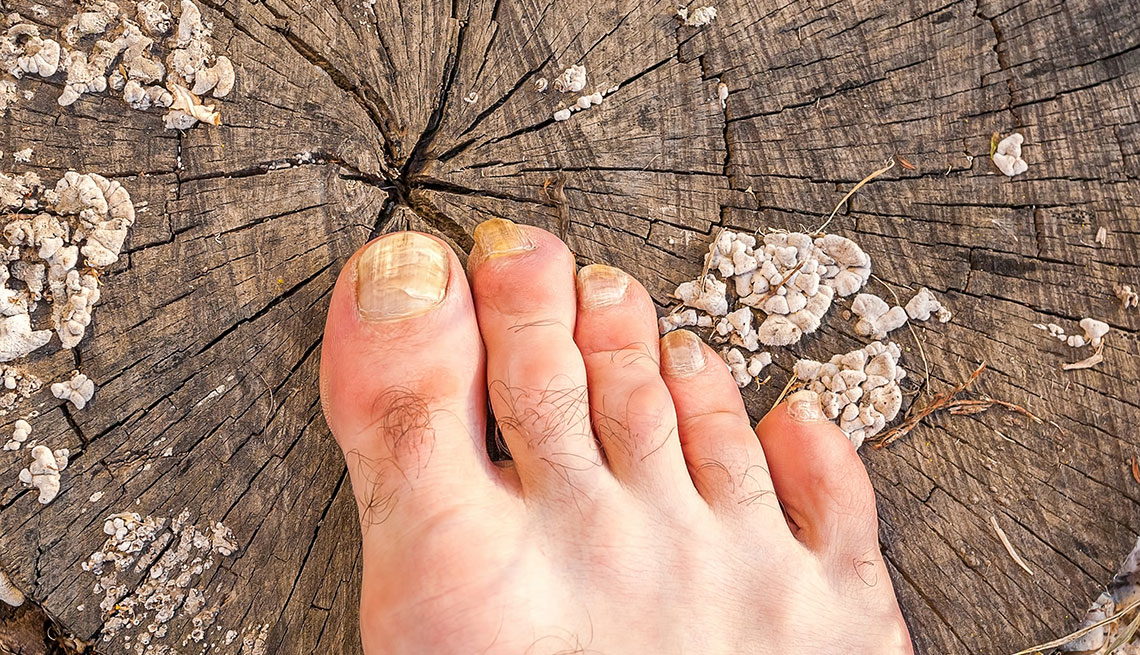
GETTY IMAGES
Toenail fungus
Toenail fungus infections are the result of various fungal organisms. Yeast and molds can also lead to nail infections. Athlete’s foot is caused by a number of different fungal infections and can spread from one toe to another. “Toenail fungus can affect anyone but becomes more prevalent with aging,” according to the Verywell site. Individuals with certain diseases, such as diabetes and conditions that affect limb circulation, are more susceptible to fungal nail infections, as well as people who have suppressed immune systems.”
Changes to your nails, whether on your fingers or toes, can take place for many reasons. However, it is still important to see your doctor or a dermatologist. Cha
copy: https://www.aarp.org/
